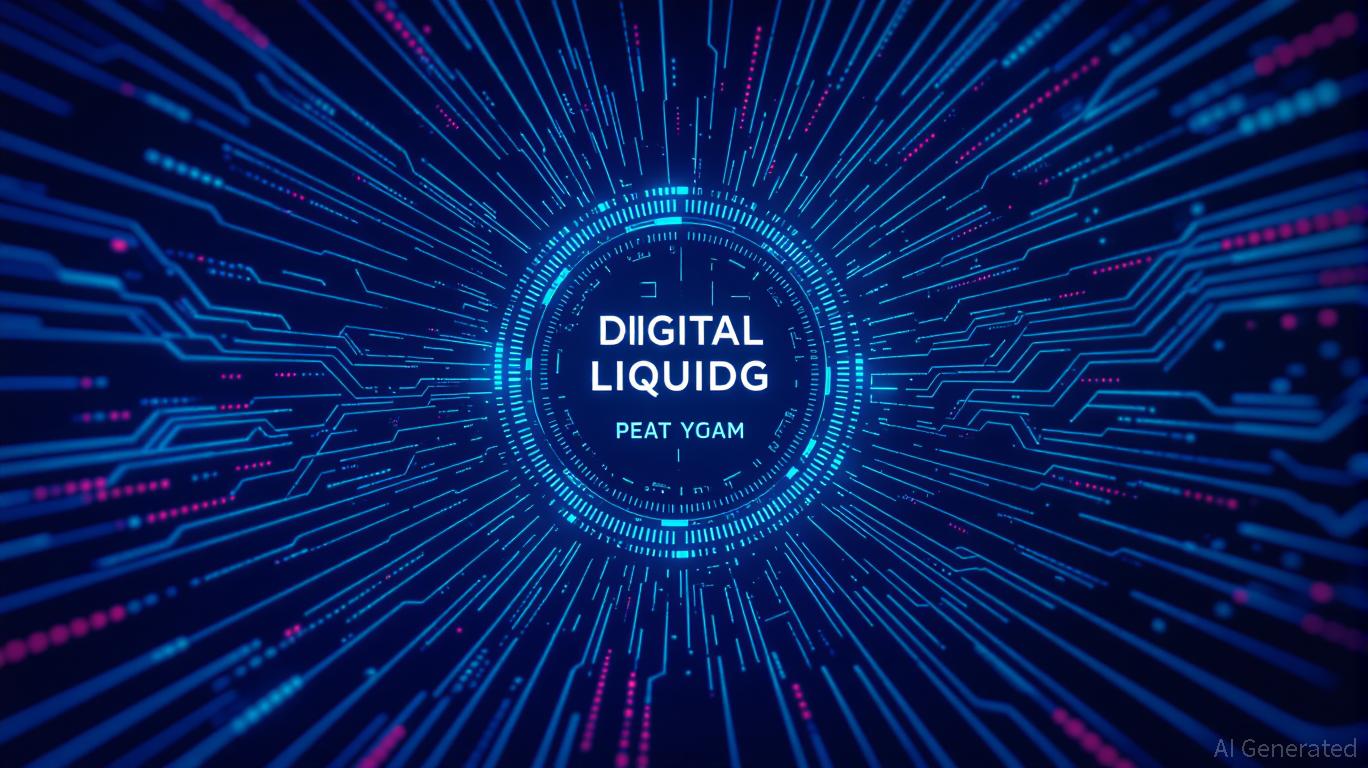Hyperliquid (HYPE) Price Rally: How Infrastructure and Institutional Support Drive DeFi Expansion
- Hyperliquid (HYPE) gains DeFi traction with 70-80% market share via HyperEVM/Unit innovations and 78% user growth by Q4 2025. - SEC S-1 compliance and USDH stablecoin (backed by BlackRock/Stripe) strengthen institutional trust and $1B treasury partnerships. - $50 price target depends on absorbing $314M token unlock risks, maintaining technical resilience, and resolving governance controversies. - Macroeconomic factors including Bitcoin performance and Fibonacci level retests will determine HYPE's Decembe
Hyperliquid (HYPE): Can It Reach the $50 Mark?
Hyperliquid (HYPE) has become a prominent name in the decentralized finance (DeFi) sector, recently rebounding by nearly 2% after briefly falling below $30 in late 2025. Market experts are now speculating whether HYPE could climb to $50, a goal that depends heavily on its ongoing technological progress and the extent of institutional involvement. This analysis explores the factors driving Hyperliquid’s momentum, including its infrastructure breakthroughs and regulatory achievements, while also considering the potential obstacles that could impact its future.
Driving DeFi Forward: Hyperliquid’s Infrastructure Breakthroughs
Hyperliquid has established itself as a leader in decentralized perpetual trading, commanding 70–80% of the market. This dominance is largely attributed to its advanced infrastructure, particularly the HyperEVM and Unit layer, which allow for smooth integration with Ethereum-based platforms and deliver exceptionally fast trade execution. These technical advantages have given Hyperliquid an edge over rivals such as Aster, attracting both high-frequency traders and institutional investors who prioritize minimal latency.

Additionally, the platform’s strategic fee reductions under HIP-3 and its deflationary token model have contributed to a 78% surge in its user base by the fourth quarter of 2025. Hyperliquid’s ability to handle $47 billion in weekly trading volume highlights its significance as a core component of on-chain finance, effectively bridging decentralized and conventional financial systems.
Institutional Support and Regulatory Progress
Institutional participation has played a crucial role in HYPE’s upward trajectory. Achieving SEC S-1 compliance has enabled Hyperliquid to integrate with traditional financial markets, enhancing its credibility among major investors. Collaborations with organizations such as Safepal and Sonnet BioTherapeutics have been instrumental in building a $1 billion digital asset treasury, further strengthening its institutional foundation.
One notable milestone is the introduction of the USDH stablecoin, which is backed by U.S. Treasuries and managed by BlackRock and Stripe. This move aligns Hyperliquid with top-tier security standards, addressing concerns about volatility and reliability. Moreover, 21Shares has submitted an S-1 registration for a Hyperliquid ETF, aiming to secure SEC approval and provide institutional investors with access to HYPE tokens through trusted custodians like Coinbase Custody and BitGo Trust. These developments indicate a growing acceptance of DeFi solutions within mainstream finance.
Potential Risks and Ongoing Challenges
Despite its progress, Hyperliquid faces several significant risks. On November 29, 2025, the scheduled release of 9.92 million HYPE tokens valued at $314 million could create substantial selling pressure unless the market demonstrates sufficient liquidity. Technical analysis also points to a possible retest of important Fibonacci support levels, with a breakdown potentially pushing prices back toward $25.
Internal controversies, such as the reassignment of the MON ticker, have sparked debate about Hyperliquid’s commitment to decentralization, which could further intensify downward pressure. Broader economic factors, including Bitcoin’s performance and overall investor sentiment, are also expected to play a pivotal role in shaping HYPE’s direction as 2025 draws to a close.
Summary
With its innovative infrastructure and strong institutional partnerships, Hyperliquid is positioned as a transformative force in the DeFi arena. However, reaching the $50 price milestone will depend on how effectively it manages token unlock events, maintains technical stability, and addresses governance issues. For investors, the balance between technological advancement and regulatory compliance will be key in determining whether HYPE can continue its growth story in the months ahead.
Disclaimer: The content of this article solely reflects the author's opinion and does not represent the platform in any capacity. This article is not intended to serve as a reference for making investment decisions.
You may also like
Bitcoin dominance dips to 23.6 fib level, signals potential altcoin rotation

Bitcoin Above $90K: Can This Rally Last?
Bitcoin stays over $90K, but weak demand and low liquidity raise questions about the rally’s strength.Low Liquidity Adds to Market FragilityShort-Covering: Fuel or Flaw?

U.S. Sanctions Spark Venezuela's Crypto Restrictions and Disrupt Energy Industry
- U.S. sanctions and military pressure drive Venezuela's intensified crypto crackdown, targeting foreign oil partners like Chevron amid geopolitical tensions. - Global crypto trends emerge as Turkmenistan plans state-controlled trading (2026) and Tether exits Uruguay, highlighting regulatory challenges for digital assets. - Chevron faces operational risks in Venezuela due to FTO designation, compliance hurdles, and supply chain disruptions after U.S. naval actions block Russian naphtha shipments. - U.S. mi

Ethereum Holds Key Support; Analysts Eye $10K Target